My City My Place
Jarsuguda
Jharsuguda, a small town nestled in the western part of Odisha, India, is a hidden gem that holds immense historical and cultural significance. With its rich heritage and natural beauty, Jharsuguda has become a popular destination for tourists seeking an authentic experience.
One of the main attractions in Jharsuguda is the famous Jhadeswar Temple. Built during the 17th century, this temple is dedicated to Lord Shiva and showcases exquisite architecture and intricate carvings. The annual Maha Shivaratri festival attracts devotees from all over the country who come to seek blessings and witness the grandeur of this sacred place.
Apart from its religious importance, Jharsuguda also boasts stunning natural landscapes. The Hirakud Dam, one of the largest dams in Asia, offers breathtaking views of the surrounding hills and valleys. Visitors can indulge in boating or simply enjoy a leisurely walk along its banks while soaking in the tranquillity.
Furthermore, Jharsuguda is home to several tribal communities who have preserved their unique customs and traditions over centuries. The Adivasi Mela held annually provides an opportunity for visitors to witness their vibrant dances, music, and art forms.
One of the must-try delicacies in Jharsuguda is the famous “Dalma.” This traditional lentil-based dish is made with a combination of lentils and vegetables like pumpkin, brinjal, and drumsticks. The flavorsome blend of spices and herbs gives it a unique taste that is simply irresistible.
Another popular dish in Jharsuguda is “Pakhala,” a refreshing summer delight. It is made by fermenting rice overnight and then served with curd, fried fish, and various accompaniments. Pakhala not only helps beat the scorching heat but also provides essential nutrients.
For those who crave non-vegetarian delights, Jharsuguda has something special to offer – “Mutton Curry.” This aromatic curry is prepared using tender mutton pieces cooked in a thick gravy made from onions, tomatoes, ginger-garlic paste, and an array of spices. It pairs perfectly with steamed rice or roti.
HIRAKUD DAM (WORLD’S BIGGEST DAM):-
Hirakud Dam, which is the longestearthen dam in the world, is built across the Mahanadi River, 15 km away from the Sambalpur district of the Indian state of Odisha. The Hirakud Dam was in-built 1957.The dam has a 55 Km long reservoir known as Hirakud reservoir, which was one of the most significant and first of its kind multipurpose river valley projects started after the independence of India.

The dam produces hydroelectricity through several hydroelectric plants. The dam generates 307.5MW power.The dam drains 75,000 sq. km.It has 98 flood gates, 64 sliding gates, and 34 crest gates to release flood water, which indeed makes it the longest dam in the world.
Today, it is a famous tourist spot, and tourists from across the world visit this place to acknowledge the amazing architecture. Hirakud Dam is a fine site for migratory birds.
If you are planning to visit the dam, then you may plan between September to March, as the weather at this time is very pleasant.
SAMBALPURI SAREE:- Sambalpuri Sarees are the most wonderful sarees of India, these are produced in Western Odisha, mainly in Sonepur, Bargarh, Sambalpur, Boudh and Balangir Districts of Odisha. Each and Every thread of the Sambalpuri Sarees are Handwoven. All the process involved in weaving a saree is carried out manually, no machine is used in any of the steps.
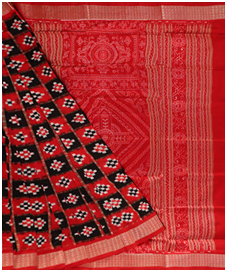
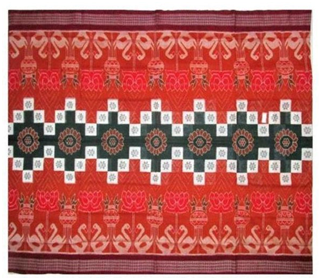
Sambalpuri sarees particularly are known for the utilization of traditional themes taking after its relationship with this shoreline state, for example, Sankha or shell, phula or flower, and chakra or wheel, swans, fish.
STEEL PLANT OF ROURKELA:-
Popularly known as Odisha’s first integrated steel plant in the public sector,RSP was the first plant in India to incorporate LD technology of steel making. Rourkela Steel Plant was founded in 1955. In 1960, the plant was established with a capacity of 1 million tonnes with a German collaboration. With time, this capacity increased to 2 million tonnes of hot metals, 1.6 million tonnes of saleable steel, and 1.9 million tonnes of crude steel. Since it comes under the Steel Authority of India, the plant witnessed many stages of modernization and expansion in the last few decades. Under the expansion project, a fertilizer plant was established in 1964 with an aim to utilize the remnants of the steel plant. Today, the plant not just holds the tag of being the first steel plant in Odisha but also one of the largest of their kind in India.
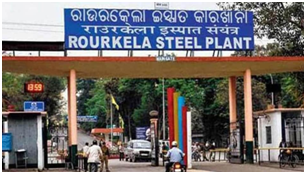
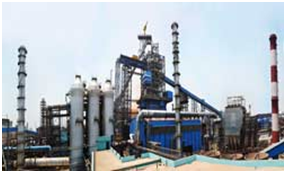
MAA SAMALESWARI TEMPLE:-
Samaleswari Temple is a Hindu temple in Sambalpur, Western Odisha, India dedicated to the goddess known as ‘Maa’, also known among the natives as samalei Maa, meaning MotherSamaleswari.She is considered as the presiding deity of Sambalpur.
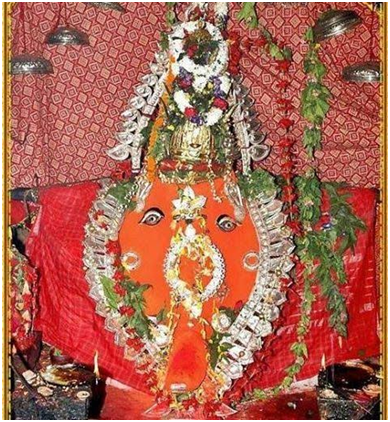
According to historical evidence, King Balaram Dev of Chauhan Dynasty built Samaleswari Temple in the 16th century. Once he was visiting the region where he saw the images of Goddess Samaleswari under a tree. That was the moment when he decided to build a temple of Goddess Samaleswari.
The Temple is built by a kind of stone similar to Granite but not actually Granite.The idol of Maa Samalei consists of a block of Granite Rock designed and ornamented in a perfect manner to give it the shape of a face.
Jharsuguda is not just a town but a treasure trove of history and culture waiting to be explored. Its temples, natural beauty, and diverse traditions make it an ideal destination for those seeking an enriching travel experience.
By- Team Jharsuguda


